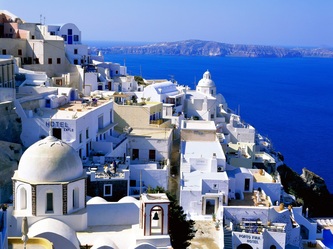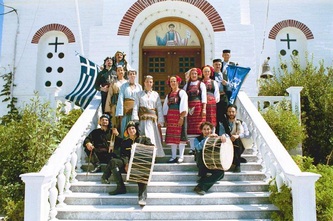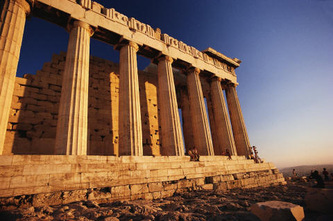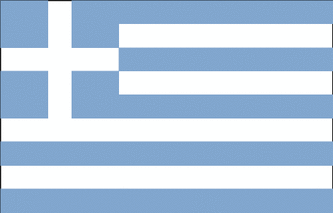Introduction
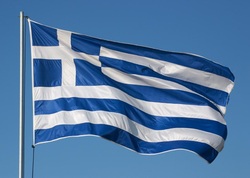
Although we know the country as Greece, its official name is Elliniki Dhimokratia, or the Hellenic Republic in English. (Encyclopaedia Britannica)
Greece achieved independence from the Ottoman Empire in 1829. From the 1850s to the 1950s, it began adding neighbouring islands and territories that spoke Greek. During the Second World War, it was a chaotic time for Greece as it was first occupied by Italy, and then Germany. There was a civil war between the king and communist rebels after the Second World War. In 1949, the communist rebels were defeated. The country joined NATO – the North Atlantic Treaty Organization in 1952. But there wasn’t peace for long. In 1967, a group of officers seized power and started a military dictatorship. They didn’t last long, and were overthrown in 1974. There was a referendum created by the parliamentary republic to stop monarchy. Greece joined the European Union in 1981 and the European Economic and Monetary Union in 2001. Since then, Greece has been a major beneficiary for the European Union. (CIA)
Greece achieved independence from the Ottoman Empire in 1829. From the 1850s to the 1950s, it began adding neighbouring islands and territories that spoke Greek. During the Second World War, it was a chaotic time for Greece as it was first occupied by Italy, and then Germany. There was a civil war between the king and communist rebels after the Second World War. In 1949, the communist rebels were defeated. The country joined NATO – the North Atlantic Treaty Organization in 1952. But there wasn’t peace for long. In 1967, a group of officers seized power and started a military dictatorship. They didn’t last long, and were overthrown in 1974. There was a referendum created by the parliamentary republic to stop monarchy. Greece joined the European Union in 1981 and the European Economic and Monetary Union in 2001. Since then, Greece has been a major beneficiary for the European Union. (CIA)
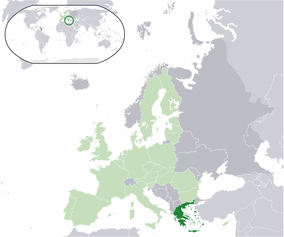
The recession hit Greece hard. The economy went down by 2% in 2009 and the government expects it to fall by 4% in 2010 as a whole. The unemployment rate went up to 11.8% for 2010. Employment rate was higher during the summer time as tourism made up 15% of their economy. But when all the tourists left, the employment rate dropped. The near future looks bleak, as the International Monetary Fund predicts the unemplotment rate to rise even higher to 14.8% by 2012. (Wall Street Journal)
Greece has a total area of 131 957 sq km. To compare, it’s slightly smaller than the American state of Alabama. There are 11 285 000 people living here, which means there are 86 people per square kilometres. Its GNI PPP per Capita in US dollars was $28 470 in 2008. (Encyclopaedia Britannica)
Greece’s capital has been around for thousands of years – Athens, the birthplace of democracy. Greece is a unitary multiparty republic with two heads – the President is the head of state. The head of government is the Prime Minister. They use the same currency as most of Europe – Euros. An overwhelming 99% of the population speak Greek although they are of different ethnic groups. (Encyclopaedia Britannica) 98% of the population are Greek orthodox. 1.3% are Muslim and the remaining practice other religions or are atheist. (CIA)
Greece has a total area of 131 957 sq km. To compare, it’s slightly smaller than the American state of Alabama. There are 11 285 000 people living here, which means there are 86 people per square kilometres. Its GNI PPP per Capita in US dollars was $28 470 in 2008. (Encyclopaedia Britannica)
Greece’s capital has been around for thousands of years – Athens, the birthplace of democracy. Greece is a unitary multiparty republic with two heads – the President is the head of state. The head of government is the Prime Minister. They use the same currency as most of Europe – Euros. An overwhelming 99% of the population speak Greek although they are of different ethnic groups. (Encyclopaedia Britannica) 98% of the population are Greek orthodox. 1.3% are Muslim and the remaining practice other religions or are atheist. (CIA)
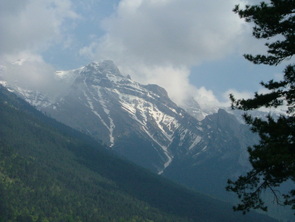
Greece is located in a mountainous region, made of one large landmass and many chains of islands and peninsulas. Its highest point is Mount Olympus. It is located next to several seas – the Aegean Sea, the Ionian Sea, and the Mediterranean Sea. In total, Greece owns 1 310 square kilometres of water and 13 696 kilometres of coastline. Greece is located in the temperate regions with mild wet winters and hot dry summers. Greece’s resources include lignite, petroleum, iron ore, bauxite, lead, zinc, nickel, magnetite, marble, and salt. There is a possibility of using hydropower for fuel. However, there are air and water pollution problems. Because of its location, earthquakes and volcano eruptions are not something the people take lightly. (CIA)
